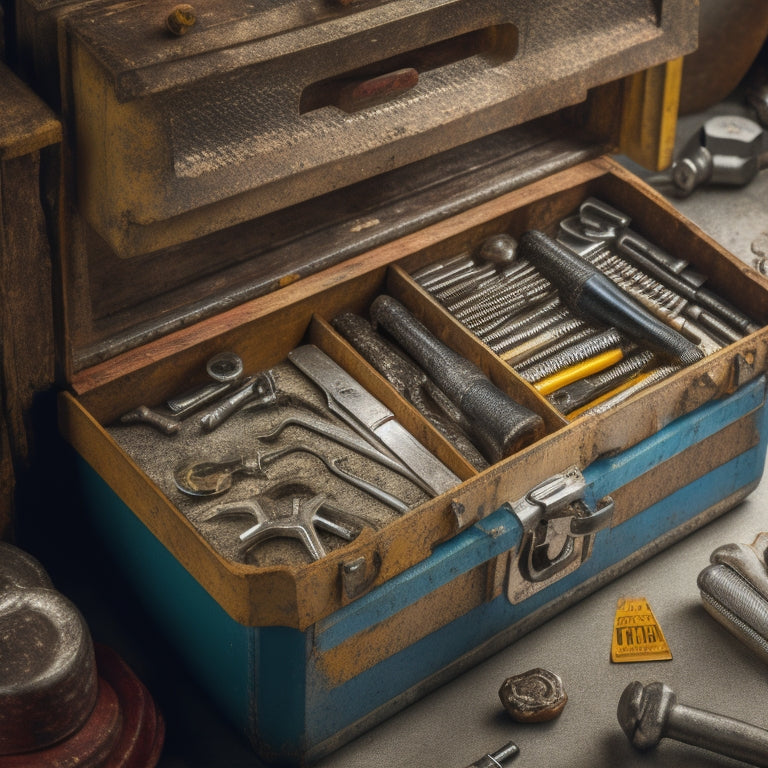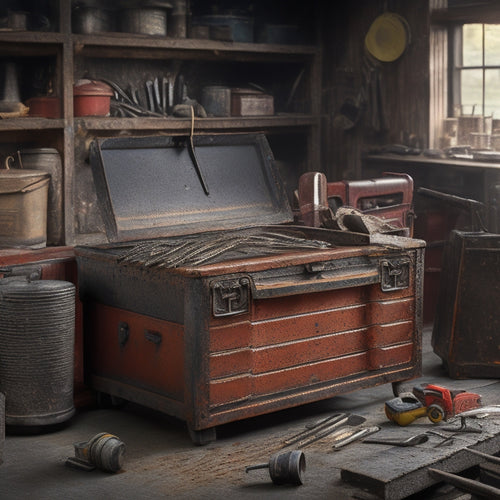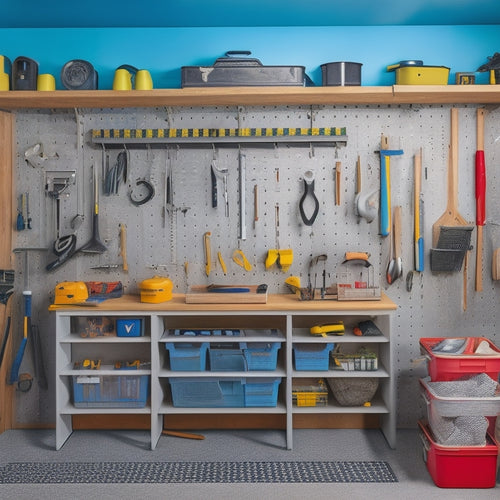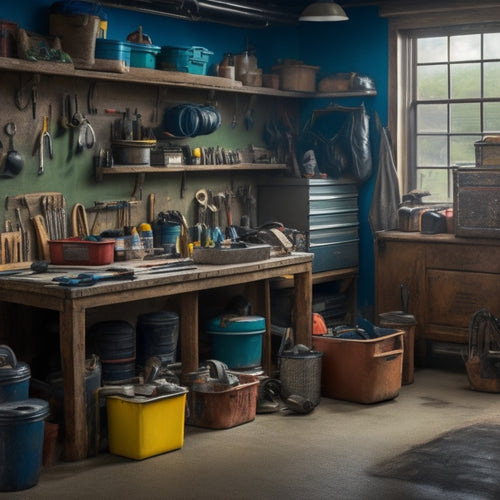
3 Best Ways to Tame Your Tiny Toolbox Chaos
Share
You're tired of digging through your tiny toolbox to find the right tool. To tame the chaos, start by optimizing your toolbox real estate: sort tools by frequency of use, place often-used items in easy spots, and consider color-coding. Next, utilize vertical storage space by installing shelves, hooks, and pegboards to maximize storage. Finally, designate zones for tools, categorizing them by function or project type. By implementing these strategies, you'll be well on your way to a more organized workspace. As you tidy up, you'll uncover even more opportunities to fine-tune your system and supercharge your productivity.
Key Takeaways
• Optimize your toolbox by sorting tools by frequency of use and placing often-used items in easily accessible spots.
• Maximize vertical storage space by installing shelves, hooks, and pegboards to store tools and free up floor space.
• Designate zones for specific tools and tasks, categorizing them by function to improve efficiency and reduce stress.
• Use a combination of storage solutions such as shelves, hooks, pegboards, and magnetic strips to store tools and accessories.
• Implement a visual system for quick tool identification and keep frequently used items within easy reach to enhance organization efforts.
Optimize Toolbox Real Estate
Sort your toolbox's contents by frequency of use, placing your most-reached-for tools in easy-to-access locations to maximize storage space. This simple trick will save you time and frustration in the long run.
Next, consider color coding your tools and supplies to quickly identify what you need. You can use stickers or labels to categorize items by type, such as electrical, plumbing, or carpentry. This visual system will help you find what you need at a glance.
Additionally, take advantage of magnetic strips to store small metal tools like screwdrivers, pliers, and wrenches. These strips can be attached to the inside of your toolbox lid or walls, keeping your tools organized and within reach.
Utilize Vertical Storage Space
Make the most of your toolbox's vertical space by installing shelves, hooks, or pegboards that allow you to store items like levels, hammers, and extension cords, keeping them off the floor and out of the way. By doing so, you'll free up valuable floor space and reduce clutter. Here are some ideas to get you started:
| Storage Solution | Tool/Item | Benefits |
|---|---|---|
| Shelves | Power tools, drill bits | Easy access, keeps heavy items off floor |
| Hooks | Hammers, levels, extension cords | Maximizes wall space, keeps frequently used items within reach |
| Pegboards | Hand tools, accessories | Customizable, keeps small items organized |
| Magnetic strips | Small metal tools, screws | Keeps tiny items from getting lost, saves space |
| Overhead storage | Infrequently used tools, seasonal items | Keeps items out of the way, frees up floor space |
Designate Zones for Tools
Create designated zones within your toolbox for specific tools or tasks to help you quickly find what you need and maintain a sense of organization. This will enable you to work more efficiently and reduce stress when searching for a particular tool.
Consider categorizing your tools by function, such as a zone for hand tools, power tools, and fasteners.
You can also create zones based on the type of project you're working on, like a zone for woodworking or automotive projects.
Frequently Asked Questions
How Do I Keep Small Parts From Getting Lost in My Toolbox?
You separate tiny screws from nuts, and bolts from washers, by using magnetic trays and drawer dividers, keeping small parts organized and easily accessible, so you don't waste time searching for them.
Can I Use a Toolbox With a Non-Standard or Irregular Shape?
You can definitely use a toolbox with a non-standard or irregular shape - it's all about maximizing custom toolbox shapes with clever organization hacks, like adjustable dividers or adhesive-backed trays, to keep your tools tidy.
Are There Toolboxes Specifically Designed for Left-Handed Users?
Imagine effortlessly wielding your tools with precision, as if your left hand was meant to hold them all along. You'll find left-handed toolboxes offering advantages like mirrored layouts and customization options to fit your unique needs.
How Often Should I Clean and Maintain My Toolbox Organization?
You should clean and maintain your toolbox organization regularly, ideally every 1-2 weeks, to prevent clutter buildup and guarantee easy access to tools, making your workflow more efficient and reducing stress.
Can I Repurpose an Old Storage Container as a Toolbox?
"As a modern-day MacGyver, you're on the right track! You can totally repurpose an old storage container as a toolbox, getting creative with DIY organization hacks to maximize space and make your life easier."
Related Posts
-

Maximum Capacity Tool Boxes for Heavy-Duty Use
You need a maximum capacity tool box that can withstand the rigors of heavy-duty use, protecting your essential tools...
-

Advantages of a Pegboard System in Your Garage
You can instantly alter your garage into a more organized, efficient, and productive space by installing a pegboard s...
-

Best Cheap Tool Boxes for Budget-Conscious Buyers
You need a reliable tool box that gets the job done without breaking the bank. Look for durable materials, rust-resis...


